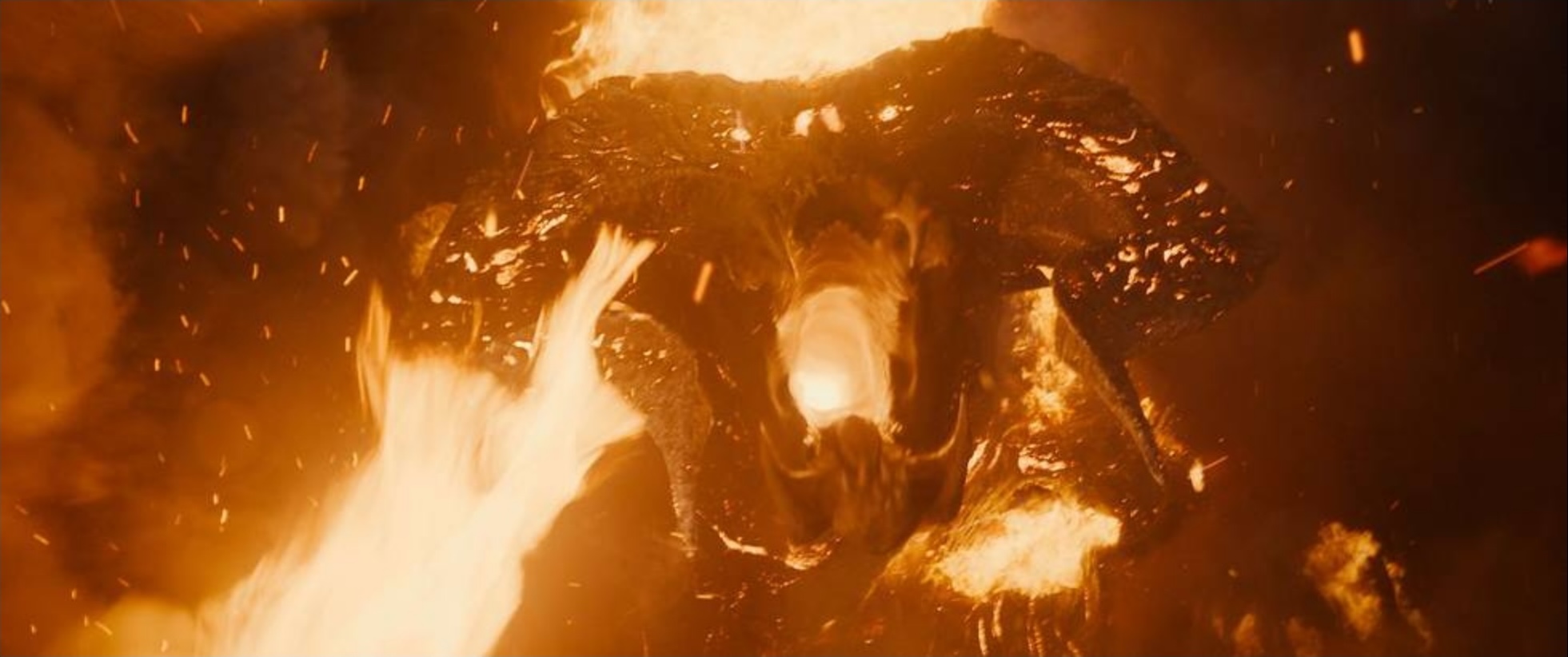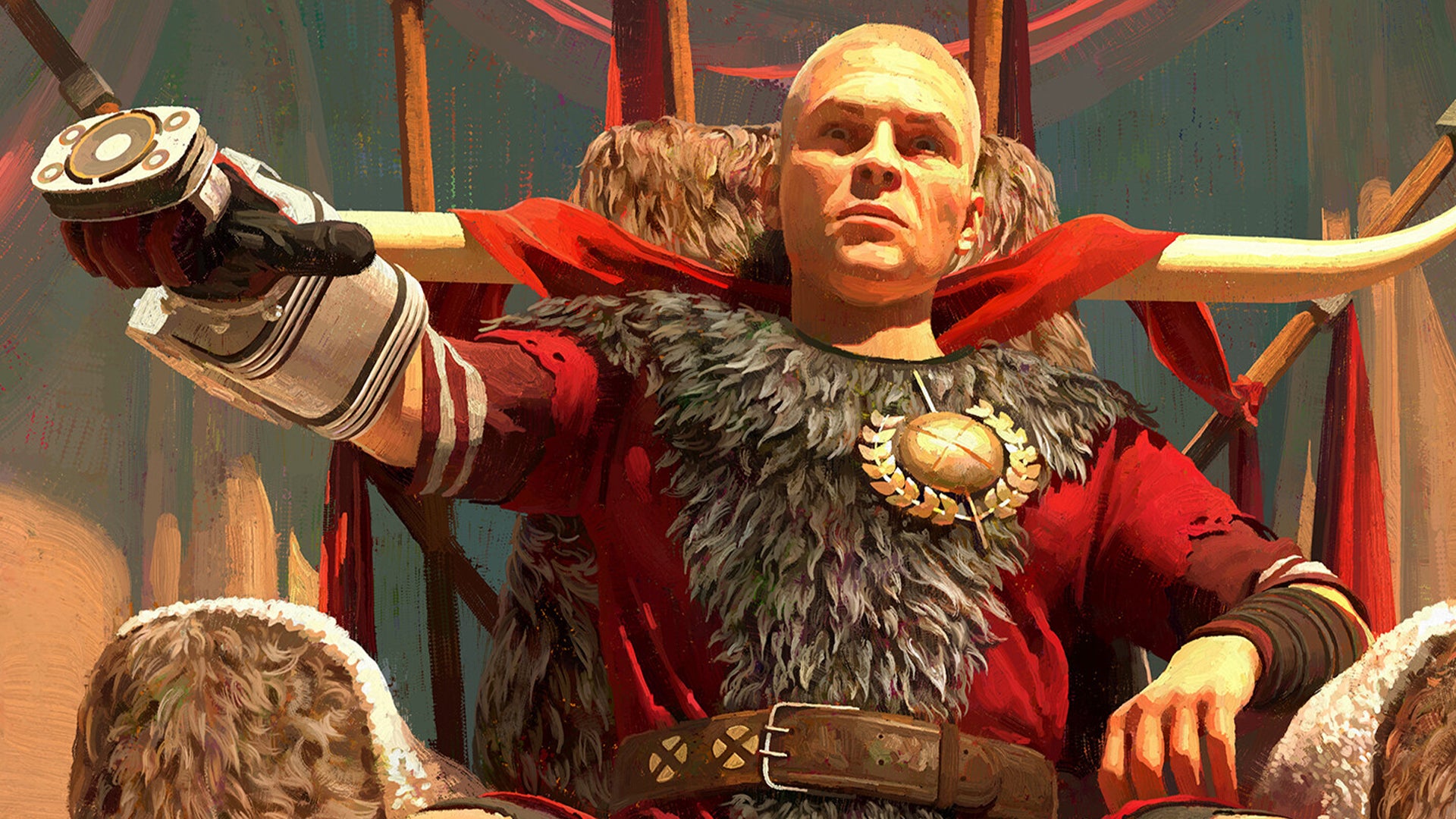
Season 1 of The Lord of the Rings: The Rings of Power promised a balrog, and while the tragic sacrifice of King Durin in the mithril-rich depths beneath Khazad-dûm might have been brief, it was certainly spectacular. But there’s one thing it didn’t do, and that’s give Rings of Power’s answer to a simple question: Can balrogs fly?
At this point, you might wonder if I’m joking. Of course balrogs can fly; they have wings. They’ve always had wings. The one in the Peter Jackson movies has wings. But what if I told you that when Peter Jackson and crew chose to depict the balrog with wings, they were making a somewhat controversial choice?
What if I told you that the question of whether balrogs have wings at all has been vexing Tolkien scholars for decades?

The source of the problem is that all of the language that Tolkien used to refer to the “wings” of balrogs and their “flight” is open to interpretation.
The first description of a balrog’s form comes in the Moria sequence of The Fellowship of the Ring. And the first reference to it having “wings” comes after several paragraphs that simply describe it as an enormous, maned, man-shaped figure, wielding a sword in one hand and a whip in the other, obscured in fire, shadow, and smoke. And in this first mention, Tolkien explicitly doesn’t say that the balrog has wings. He says the darkness around it looks like wings: “the shadow about it reached out like two vast wings,” as the balrog squares up with Gandalf on the bridge of Khazad-dûm.
The next reference, two paragraphs later, describes the balrog’s fire dying down, and the shadow around it increasing, until “suddenly it drew itself up to a great height, and its wings were spread from wall to wall.” In isolation, this language is more literal. But taken with the first reference, it can be argued that Tolkien is simply elegantly referring to the previous simile, without intending a literal meaning — which is a generally observable pattern in the descriptive writing through his novelistic work.
A few paragraphs later, the bridge crumbles under Gandalf’s staff, and the balrog falls into the abyss. Tolkien writes: “its shadow plunged down and vanished.” Which raises other good arguments for flightless balrogs: If the balrog could fly, why couldn’t it fly up out of the chasm? Why would Gandalf have even tried smashing the bridge under its feet in the first place, if he knew it was capable of flight?
And not to get too deep into textual analysis, but suffice to say, for every time Tolkien referred to balrogs in The Silmarillion as “flying with winged speed” or “passing over” a great distance, there is a counter-example of him using “flight” simply to mean “escape” or referring to whole land-bound armies as “passing over” a country. And there are many references, in Tolkien’s early writings that include balrogs, to balrogs being part of ground-bound armies, of the powers of evil containing no flying monsters to match the Great Eagles, etc.
But on the other hand, The Silmarillion was published posthumously, as compiled from Tolkien’s most complete writings, not necessarily his most up to date. And we could keep going around in circles in this way for hours.
The Lord of the Rings: The Rings of Power, a show that seems to want to align itself visually with the Peter Jackson movies, has a balrog that looks a dead ringer for the one in Jackson’s Moria, complete with curved horns, a skull-like face, and great winged appendages covered in cascading smoke. But can it fly? The show has not yet clearly put a foot down in that arena: We don’t see it fly in its brief appearance, but we do see it fall, flapping its wings in either an unsuccessful attempt to rise into the air or in a successful attempt to control its descent. So it too is open to interpretation, at least for now.
People will debate whether balrogs have wings and can fly until humanity is a fairy tale in books written by rabbits, because there are compelling textual arguments for both sides and the “real” answer will never be known. It’s the “Is a hot dog a sandwich?” of Tolkien studies/fandom, the “Do you say it gif or jif?” It’s a question that’s fun to consider, so long as you take it with the weight of a Buddhist koan, and not the greatest thread in the history of forums, locked by a moderator after 12,239 pages of heated debate.
The most open truth is that Tolkien wrote a lot of descriptions of balrogs that could be interpreted as giving them wings and the ability to fly, but he also never explicitly stated that they have wings and can fly, not in any material that he himself saw all the way to publication. Both sides are potentially right and potentially wrong in equal measure.
You can even hold both ideas simultaneously, like this: “Yeah, the textual support is limited in certain ways, but, in all earnestness, the wings look cool as hell, and it’s all made-up fantastical mythopoeic opera anyway, so why not? The balrog in The Fellowship of the Ring isn’t described as having horns, either, and they look great. Maybe the chasm under the bridge of Khazad-dûm was too narrow for the balrog’s wings to work?”
Anyway, that’s my take on it. Now to take a nice leisurely sip of this delicious water, and look at the comments section…
Source:https://www.polygon.com/lotr-rings-of-power/460132/trop-balrog-finale-lore-tolkien





